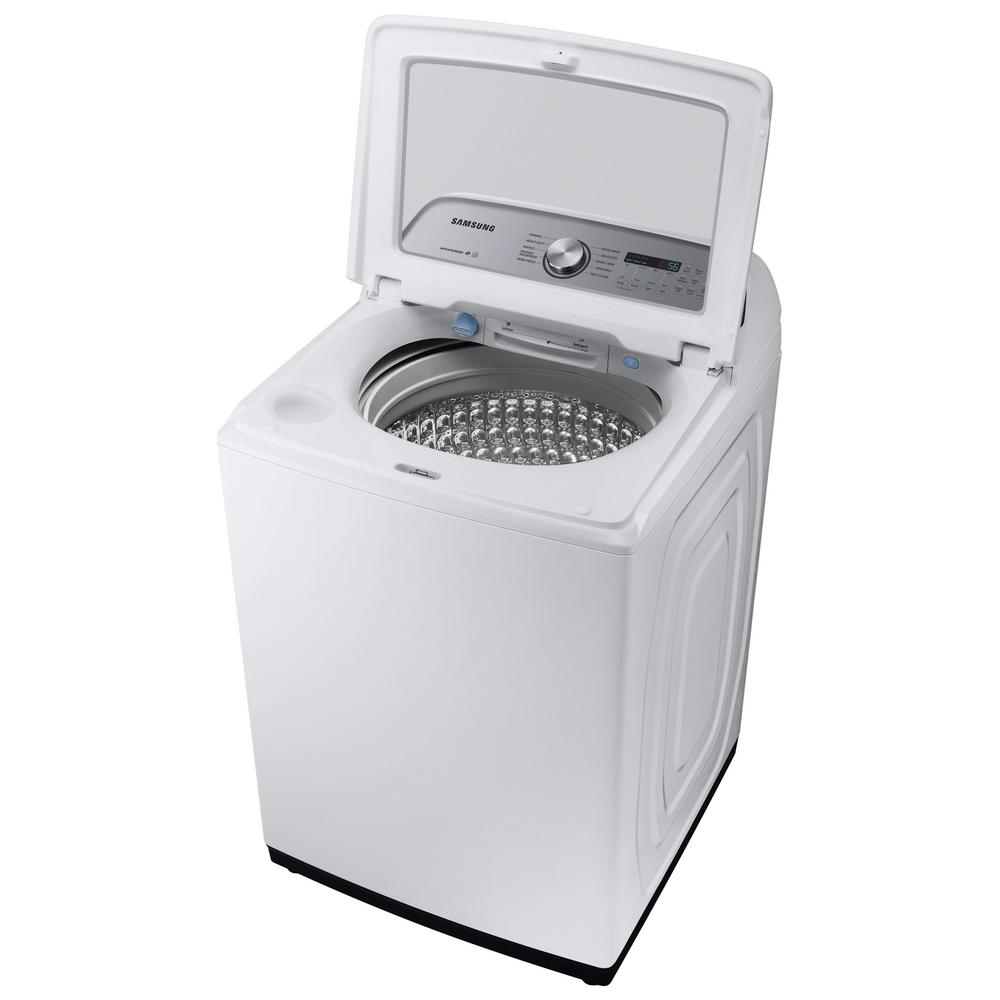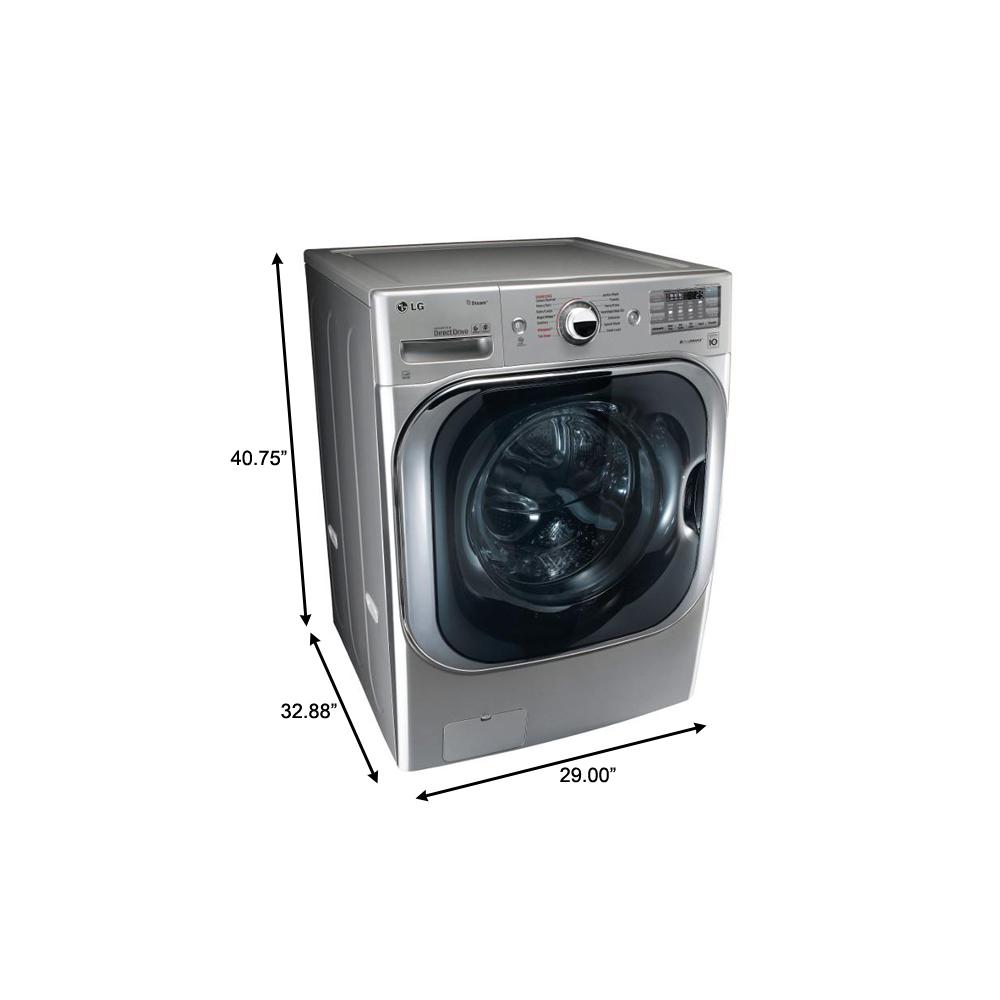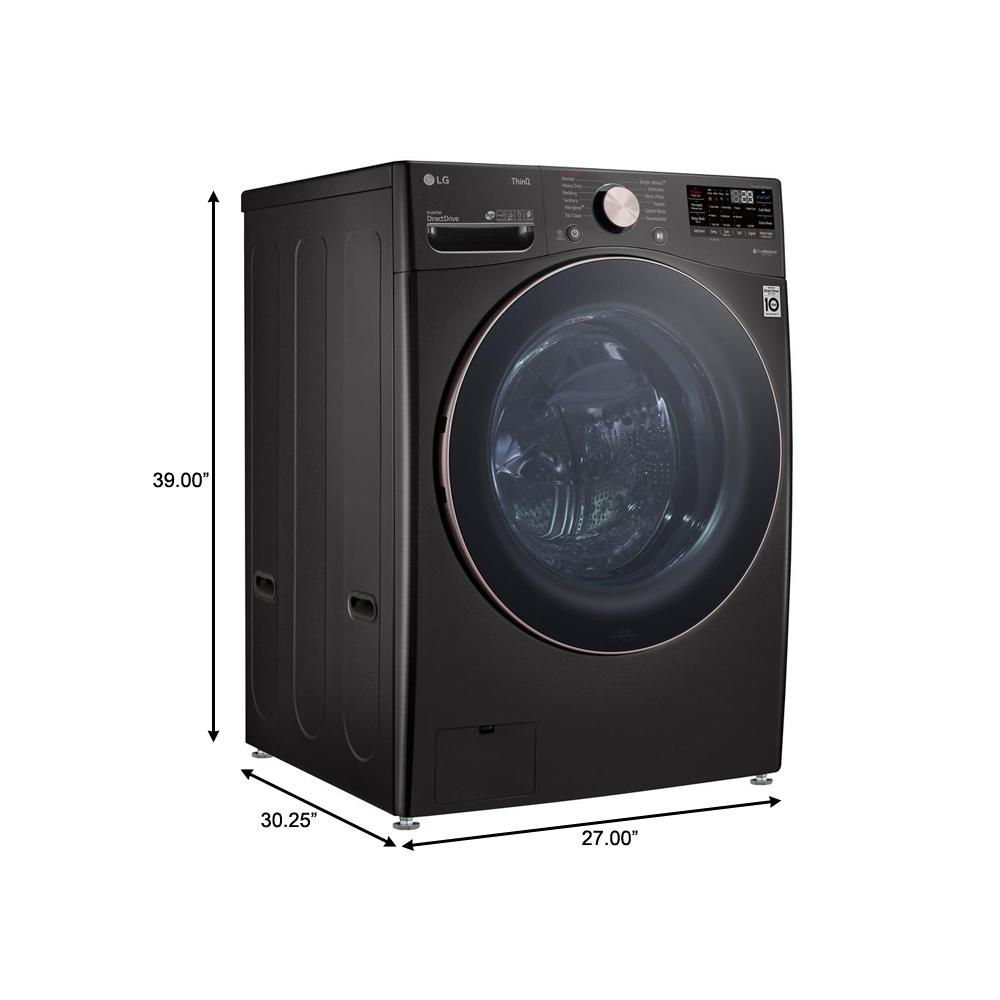LG 7.3 cu. ft. Ultra Large Black Steel Smart Electric Vented Dryer with EasyLoad Door, Sensor Dry & TurboSteam, ENERGY STAR
LG TurboSteam dryer generates real steam to reduce wrinkles. Loading & unloading dryer is easier w/ EasyLoad dual door opening. Smart Home & Wi-Fi enabled to operate & troubleshoot w/ phone app.
LG Steamdryer with 7.3 cu. ft. of capacity, this dryer handles really large loads. Saving you time and energy. LG SteamFresh cycle refreshes clothes and reduces wrinkles in just 20 minutes, so your favorite outfit is always ready-and you can give the iron a rest. And with SteamSanitary cycle, you can safely sanitize throw pillows, toys and other delicate with the touch of a button. With features like the Dual LED Display indicators and intuitive Dial-A-Cycle controls, youll find the right setting every time.
- Do laundry a little less often. With 7.3 cu. ft. of capacity, this dryer handles really large loads. Saving you time and energy
- You grab your favorite shirt from the closet only to find that the hanger has left indelible imprints on each shoulder. What to do when there’s no time to wash. LG TurboSteam technology to the rescue. Toss the shirt in the dryer, turn on TurboSteam and in just 10 minutes, your shirt is back in tip-top shape. Also helps refresh fabrics and reduce wrinkles in half the time of other steam settings
- The dual-opening options of the LG EasyLoad door make loading and unloading the dryer easier than ever. Transferring wet clothes from the washer. Simply press the release button and pull the door down, hamper style to keep that stray sock from hitting the floor. Removing dry items. Swing the door to the side to clear the way for your basket below. Even tight spaces and challenging laundry-room layouts are no match for versatility like this
- LG dryers with SmartThinQ technology will change the way you think and live. Imagine being able to remotely control key dryer features simply by downloading the free LG SmartThinQ app onto your Android or iOS device. Eliminate the guesswork and avoid wrinkles by extending the cycle time on your commute home or receive an alert on your smartphone when your favorite shirt is dry. You can even start the dryer with a voice command and never miss a moment of your favorite show. SmartThinQ works seamlessly with the voice-activated features of the Google Assistant and Amazon Alexa
- Whats worse than pulling clothes out of the dryer and finding theyre still damp. Our Sensor Dry system measures the moisture levels during the cycle and automatically adjusts the drying time, to help ensure you get dry laundry every time
- The FlowSense Duct Clogging Indicator will tell you when its time to clean the ducts out. Clean ducts mean a great drying every time
- When your dryer uses about 20% less energy, youre going to make an impacton your utility bills, your energy consumption, and most importantly, the environment
- Let us take the guesswork out of doing the laundry. With features like our Dual LED Display indicators and intuitive Dial-A-Cycle controls, youll find the right setting every time
- Theres no need for laundry to be noisy. The LG LoDecibel motor: chances are you may not even notice it
- If you ever experience an issue with your LG dryer, you don’t have to worry. The SmartDiagnosis feature helps the service center diagnose problems over the phone, or with a simple app on your smart phone, helping you minimize costly, inconvenient service calls
- End-of-cycle signal provides an audible alert that the dryer cycle is finished
- Custom program option helps you customize a program with the push of a button
- SteamSanitary cycle safely sanitizes items marked as non-washable
- No more damp clothes-the built-in sensor detects moisture levels and automatically adjusts drying time for loads of all sizes. No more overdrying-dryer shuts off at just the right time to save energy with less wear and tear on clothes
- Setup an LG Service Appointment to reverse the EasyLoad dryer door, free of charge, Monday-Friday (excluding Public Holidays) 8:00 am to 6:00 pm CST at 800-243-0000. Reference Model # DLEX7900BE.
- Energy Star
Additional information
| Depth With Door Open 90 Degrees (In) | 50.25 |
|---|---|
| Door Opening Height x Width (In.) | 13.75 x 23 |
| Product Depth x Height x Width (in.) | 29.5 x 44.25 x 27 |
| Certifications and Listings | CSA Listed,Energy Star |
| Manufacturer Warranty | 1 Year Parts & Labor |






by Bonnie
Watt usage went up after i bought new washer and dryer! Imy old set was 13 years old i was expecting it to go down not up! I am reall disappointed! Other than that its ok!
by Linda
Only had it for about a month but so far it has been great. Quite complicated to change the door to swing the other way so left as is. I can pull door down as well but not all the way.
by Patticake
So far we have been very happy with this dryer and it’s features.
by Theo
I bought this a months ago with the matching washer I love both of them.
by Rick
We’ve just recently purchased this washer with a matching dryer. As a retired couple, our home has a relatively small area for a washer dryer set. We set out to replace our previous set without size as a consideration. We love the many different settings which assure a perfect resulting wash. We also found that this set was much more compact yet providing the washing of larger loads. Our previous set was advanced but so large that the pair dominated the washroom. Additionally, the noise our previous set made was deafening and distracting. It sounded like combat gaming background sound when running. We can’t hear this new set at all. We purchased the pair based on research and settings but have found it even better once installed and running. Those are two things you can’t value until after installation. LG is the new standard.
by Tony
I like the music the washer plays when done and is easy to use.
by Dan
Not only is the dryer quiet, it is energy efficient, has many options for drying different types of clothing/bedding, and the door is capable of opening and closing either from the top down or the side, a handy feature when loading and unloading. Clothes come out with no wrinkles — another plus. It’s toughness can also stand up to heavy duty usage. This dryer I can highly recommend.
by Cheri
We are so happy with our purchase. With the steam feature there is less ironing and it save a lot of time. The size is perfect for our family.